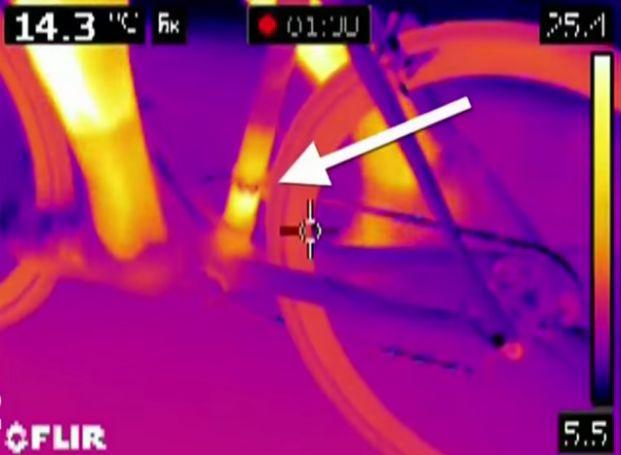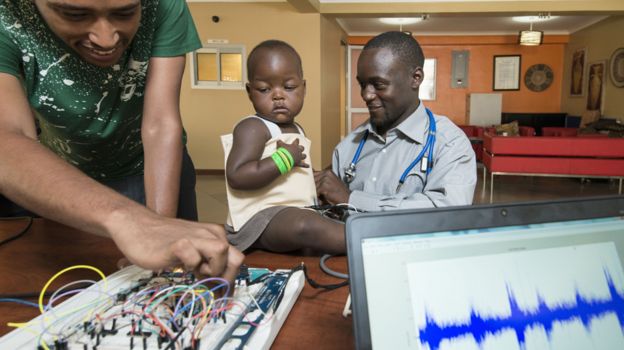As cheating goes high tech, so does the Tour de France to catch the cheaters
The Tour de France started this weekend. And sadly, as with many elite sports, bicycle racing is under the microscope for cheating once again. There have been allegations of doping in the Tour de France since the race began in 1903. (Back then, it was legal!) Then, in 2012, Lance Armstrong was stripped of his seven Tour de France titles before he eventually admitted to doping.
There are, of course, other ways to cheat. These tend to be more mechanical in nature. In the second Tour de France (1904), some cyclists caught a ride on a train. In other races, cyclists were towed by cars. It is a grueling race, and many cyclists have looked for ways to get an edge on the competition.
Now, there’s a new twist to the cheating: mechanical doping. While it has long been suspected that elite riders use technology to cheat, 2016 saw the first confirmed case. Officials found a hidden motor installed inside the bottom bracket of a competitor’s bike.
“It was no secret that a motor was found. We believe that it was indeed technological doping,” said Brian Cookson, the president of the Union Cycliste International (UCI) regarding the Cyclocross World Championships in February.
Mechanical doping
One type of mechanical doping makes use of small mechanical motors that are placed in either the seat stay tube that connects to the rear hub or in the seat tube that connects to the bottom bracket. This is the type of motor discovered in February. The motors add minimal weight and are capable of generating an extra 250 watts of power.
Another method, mechanical doping via electromagnetic wheels, generates less power but is more difficult to detect. It uses a series of neodymium batteries hidden inside the rear wheel and magnetic coils hidden under the seat to generate an induction force. It is typically activated when needed by a Bluetooth device, such as a watch. It provides approximately 60 watts of power.
Using technology to catch those who use technology to cheat
The UCI has evaluated various technologies in its attempt to detect mechanical doping, from ultrasound to x-rays. These testing procedures have required large, difficult to operate equipment which has severely limited the scope of the testing.
In the case of the hidden motor found in February, the bike was dissembled in order to locate the motor. If the bike had not come under suspicion due to mechanical issues during the race, it is highly likely that the motor would not have been found.
The iPad approach
The UCI now completes electromagnetic resonance scanning on competitors’ frames using iPads with custom software. The scanner creates a magnetic field, allowing the tablet to detect interruptions in that field. The disruptions can come from a motor, a magnet, or a battery. If disruptions are detected, officials dismantle the bike to inspect it.
Enter thermal imaging
The iPad approach has limitations: Each scan still takes time, and they do not test bikes under racing conditions. Bikes are scanned either before or after the race or when they are on the roof rack in transit to a race.
Thermal imaging, however, looks for unique heat signatures of the bikes during the race. In the thermal image shown in a French STADE 2 investigation, a bright spot on the seat tube shows an area that is as warm as the cyclist’s leg. The report says this can only be explained by a hidden motor.
Motor hidden in the bike frame. Image credit: Stade 2 video image, April 2016
MATLAB, thermal imaging, and FLIR
It’s one thing to look at a single frame of a thermal image and see a “hotspot.” But when these thermal images are from videos, such as the FLIR thermal cameras used in the French STADE 2 investigation, an in-depth analysis requires image processing. And since cyclists charged with mechanical doping are likely to fight as hard and long as Lance Armstrong against such charges, you can bet the images will be used as evidence.
The problem with the thermal video is that it doesn’t necessarily show the details needed to identify the racer. In fact, in the French STADE 2 investigation, the identity of the cyclist was not shared. If, however, a matching video stream was provided, sensor fusion could be used to match the video image with the thermal image to identify the racer.
Combining FLIR infrared and other cameras with MATLAB provides you with a flexible environment to explore image processing algorithms and sensor fusion. Using FLIR cameras with MATLAB and Simulink, you can directly capture live video and images into your image processing and computer vision workflows.
The 2016 Tour de France will use both approaches
This year will be the first time thermal imaging technology will be used Tour de France. That doesn’t mean they’ve given up on the iPads. UCI will also use its electromagnetic resonance scanning tablets.
They will also be testing more bikes in 2016. Last year, only 25 bikes were tested. With the addition of thermal imaging, the UCI has announced that they have the resources in place to conduct between 3,000 and 4,000 tests at this year’s Tour de France.
 Cleve’s Corner: Cleve Moler on Mathematics and Computing
Cleve’s Corner: Cleve Moler on Mathematics and Computing The MATLAB Blog
The MATLAB Blog Guy on Simulink
Guy on Simulink MATLAB Community
MATLAB Community Artificial Intelligence
Artificial Intelligence Developer Zone
Developer Zone Stuart’s MATLAB Videos
Stuart’s MATLAB Videos Behind the Headlines
Behind the Headlines File Exchange Pick of the Week
File Exchange Pick of the Week Hans on IoT
Hans on IoT Student Lounge
Student Lounge MATLAB ユーザーコミュニティー
MATLAB ユーザーコミュニティー Startups, Accelerators, & Entrepreneurs
Startups, Accelerators, & Entrepreneurs Autonomous Systems
Autonomous Systems Quantitative Finance
Quantitative Finance MATLAB Graphics and App Building
MATLAB Graphics and App Building









Comments
To leave a comment, please click here to sign in to your MathWorks Account or create a new one.